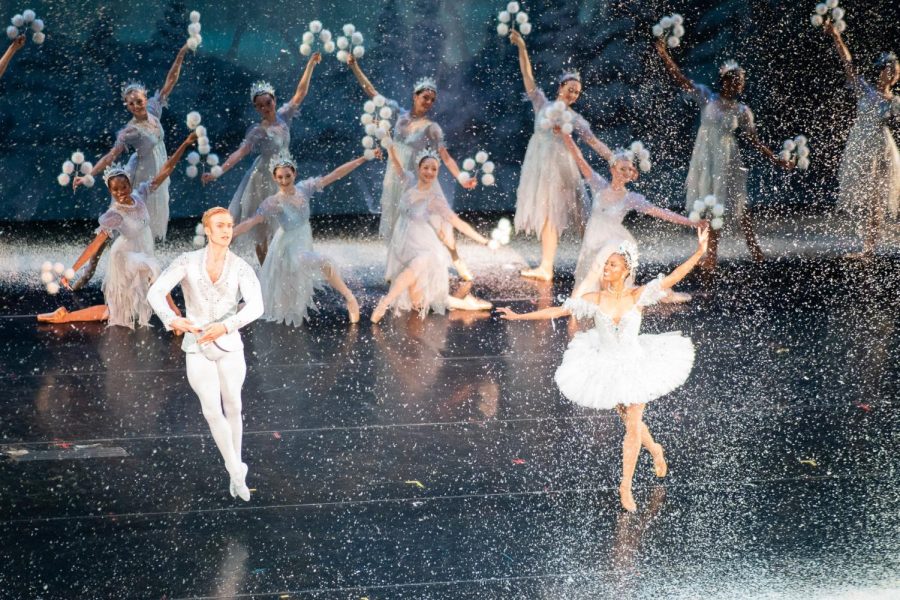Getting Into the Spirit of the Season With Ballet West’s ‘The Nutcracker’
Ballet West’s Nutcracker, in Salt Lake City on Friday, Dec. 3, 2021 (Photo by David Chenoweth | The Daily Utah Chronicle
December 10, 2021
You may have seen a “The Nutcracker” before. It may be a yearly holiday tradition. At the very least, you can recognize “The Dance of the Sugarplum Fairy” when you hear it. Ballet West’s latest production of Peter Tchaikovsky’s “The Nutcracker” reminds audiences why the ballet became a perennial favorite and reinvigorates the magic and whimsy within the familiar music.
A fairy tale, “The Nutcracker” tells the story of Clara, a young girl, who during a Christmas Eve Party, is gifted a Nutcracker by her Godfather Drosselmeyer, a mysterious magician. Late in the night, Drosselmeyer returns to the house to whisk Clara into an enchanted kingdom where the Nutcracker is a handsome prince in battle with the Mouse King. After the defeat of the Mouse King, Clara and the Nutcracker Prince are entertained with dances and gifts from various subjects of the kingdom.
First Production of the Ballet
Significantly, Ballet West performs the first production of “The Nutcracker” in the United States. William Christensen, founder of Ballet West and then director of the San Francisco Ballet, pieced together a complete version from a well-annotated copy of the score from the Library of Congress and the memories of Russian dancers George Balanchine and Alexandra Danilova, who had seen the 1892 original production. Christensen’s production was the only one performed in the United States until 1954, and he brought it with him when he left San Francisco for Salt Lake City.
Design Elements Create a Magical Atmosphere
The spell that is cast by Tchaikovsky’s music is further enhanced by the sets that grace the Capitol Theatre stage. Clara’s home is distinguished by rich brown tones, giving the Christmas Party a cozy feeling, as though it was lit by a fireplace. Fake snow consistently falls on the other side of window panes. The Land of Sweets that Clara and the Nutcracker Prince visit is illustrated through a hodge-podge of architectural styles — Russian onion domes and Japanese Pagodas are surrounded by palm trees. The ballerinas were clad in tutus of vivid tropical colors and the world was delightful to look at.
The ballet opens rather slowly, with much of the dancing occurring in the second act, but once it gets going, it’s magical. One cannot tell that the choreography has been performed before. The dancers bring fresh, sprightly energy that makes many of the movements performed feel as though they are being discovered in the moment.
They work together as a true company, displaying chemistry and confidence in the other dancers, yet everyone who crosses the stage is given a moment to shine, from the little child bumblebees that appear from under Mother Ginger’s dress to the Snowflakes that glide through the Pine Forest.
The Grand Pas de Deux between the Sugarplum Fairy and her cavalier was performed with an ethereal nobility, and it was impossible to keep a smile off one’s face during the Russian dance, the Trepak. The energy only falls flat during the comic relief moments that I assume are for the children in the audience. They lean too heavily toward the Vaudeville spectrum and don’t mesh well with the graceful, elegant tone of the rest of the production.
Tickets are on sale now, and performances run through Dec. 26.









